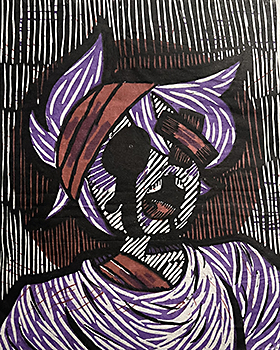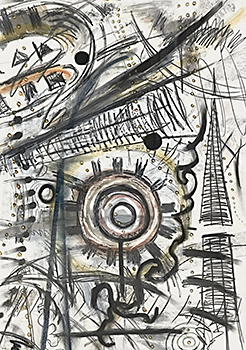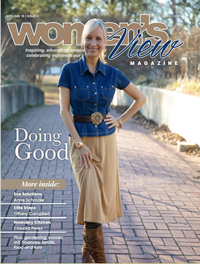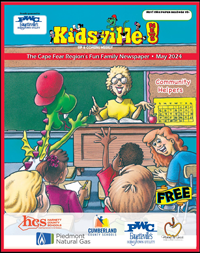 One of the best examples of expressive mark-making is a signature on a piece of paper (or a tablet) since it is a personal and unique form of self-expression. Signing your name on a legal document is not just a legal mark of identification - you are also making a statement about who you are, how you want to present yourself to the world. Your signature can convey personality, attitude and even emotions through its style and handwriting form.
One of the best examples of expressive mark-making is a signature on a piece of paper (or a tablet) since it is a personal and unique form of self-expression. Signing your name on a legal document is not just a legal mark of identification - you are also making a statement about who you are, how you want to present yourself to the world. Your signature can convey personality, attitude and even emotions through its style and handwriting form.
Appreciating the infinite ways people sign their name is the first step in appreciating the act of mark making in art. Like signatures, mark making is a physical act, how one holds the pencil or pen and the pressure being applied, as well as the speed of the signature or mark, are all contributors to an expressive style.
Mark Making: The Art of Expressive Drawing is an invitational exhibition and opens Thursday, Feb. 1 at Gallery 208 in downtown Fayetteville. Visitors to the reception or exhibit will see the variety of ways drawing is more than simply conveying information. Visitors will have an opportunity to experience the ways mark making conveys emotion, energy and is a personal response to a subject by nineteen different artists.
Seeing how artists use mark making in distinctive styles and genres is an opportunity for visitors and artists to experience the differences and similarities between the works. Also, a variety of styles at the same location has the potential to enrich the overall artistic community by encouraging dialogue and cross-pollination of ideas between different artists and genres.
 Mark Making: The Art of Expressive Drawing is not a narrow view of the medium of drawing, but an expansive way to see how drawing is fundamental throughout the creative process. We may look at an etching and admire the product of ink on paper, but it is through the drawing process that the print exists. The mark making with colored pencils by Callie Farmer results in beautiful tonal forms, but the subtle mark making is still there: the colored pencil touches the paper, the colored pencil is lifted from the paper, repeat, repeat, repeat.
Mark Making: The Art of Expressive Drawing is not a narrow view of the medium of drawing, but an expansive way to see how drawing is fundamental throughout the creative process. We may look at an etching and admire the product of ink on paper, but it is through the drawing process that the print exists. The mark making with colored pencils by Callie Farmer results in beautiful tonal forms, but the subtle mark making is still there: the colored pencil touches the paper, the colored pencil is lifted from the paper, repeat, repeat, repeat.
Horse by Shane Booth is a work created by a professional photographer. Booth’s image of an abstracted horse was created with his 1867 vintage studio camera. An ornate gold leafed picture frame borders the black space surrounding the animal. With lead pencil and a scratching technique, Booth created a diagrammatic grid of line and circles on the surface of his photograph. Subtle and unexpected, everything in the work, including the frame, supports the overall mystique of how unlike processes and materials have the potential to evoke the ethereal; as well as bring new meaning to the subject.
In a different approach to the unearthly and utilizing see-through layers, Andrew White explores the figure by drawing a series of skeletons on drawing paper and tracing paper. For the finished work, White has mounted the tracing paper drawing on top of the drawing paper to create a subject in flux. Overlapping lines (in different values) and the changing directions of the lines create a shifting or moving image.
Comparing the charcoal drawings in the exhibition is the easiest way to see the potential of line qualities. Johanna Gore’s charcoal drawing, Study of Justice, establishes the way a line can merge from delicate to assertive to create a sense of movement and energy in the work. Gore also embraces imperfection and creates messy mid-value smudges in contrast to the dark, sharp, expressive single line dividing the composition into thirds.
In comparison, Jaeden McRae conveys a type of space in which the negative (ground) is equal in importance to the positive objects (the figure). McRae uses the side of his charcoal in the drawing titled Interior with Chair to articulate the subject of a table, chair and stacked forms in a mid-value range interior setting. The artist is confident in his placement of objects with bold, wide, expressive mark-making. Using a directional light source, McRae creates a delicate environment of shifting lines and reductive perspective. As the light moves to the upper area of the picture plane, linear forms are absorbed into the brightness; in the lower composition shifting lines move into the darkness of the shaded area.
Compared to the solid modeling of objects by McRae, Lee Wilson’s print is a series of scratchy marks expanding and contracting to reveal a story about the figure in the center of the composition. Titled Mia Appearing, Wilson created the image on a pronto plate by repeating drawn lines to create the dark and dense figure emerging from a flattened background.
Several works in the exhibit are inspired by modern anime and modern cartoon style. Both styles emphasize flat shapes and color, lines are always emphasized. The multicolored relief print by Jennifer Patten titled Empty Room, Red Walls is an example of the modern anime style due to its complexity and the character in motion. For this relief edition, the artist used the repetition of black lines to trap the floating colors, unifying the image to create the angst of a situation.
A painting in the exhibit by Katey Morrill is an excellent example of how an artist utilizes paint and paintbrush as the mark-maker to create expressive drawing qualities in a painting instead of a pencil or charcoal. In comparison, Dwight Smith’s large format drawing titled Spiritual Quest is the traditional expressive drawing on paper. Large in scale, 28” x 40,” the size is relevant for the viewer to sense the physicality of the making process. Visitors to the gallery will experience the speed of the signature or mark as the artist quickly moved across the surface of the paper to make expressive marks with charcoal, colored pastels, pencil, and paint.
Coming from the abstract expressionist tradition, Smith’s work is the quintessential example of the abstract expressionist style - emphasizing the process of making instead of the final product, bold and expressive marks to create a sense of movement and energy.
Several artists build off the surface of the paper or the surface of the image in mixed media works. McRae sews waxed thread into a charcoal drawing of the skull – an illusion and the real interface to create new meaning. Chantel Dorisme creates white-on-white works by sewing white materials (thread or yarn) into the white of the paper as a way to explore the idea of line-making. In one work, Dorisme draws the figure by perforating the paper, the perforations creating the implied line of the figure.
The exhibition includes nineteen artists: Daishaun Griffith, Dwight Smith, Shane Booth, Johanna Gore, Jennifer Patten, Katey Morrill, Callie Farmer, Caitlyn Barnett, Mackenzie Brawley, Chantel Dorisme, Brittany Floyd, Carlos McCain, Jaden McRae, Cheyanne Rogers, Chelita Sipe, Jason Smalls, Andrew White, Lee Wilson, and yours truly!
Mark Making: The Art of Expressive Drawing has several advantages for the artists and the viewers. The exhibit exposes different approaches to art, broadening our understanding and appreciation of the art world. Hopefully, it will encourage creativity and experimentation with new techniques and approaches, pushing the boundaries of artistic expression.
The public is invited to the reception of Mark Making: The Art of Expressive Drawing at Gallery 208, Thursday, Feb. 1, from 5:30 p.m. to 7 p.m. The gallery is located at 208 Rowan Street and there is plenty of parking in the back of the gallery. The exhibit will remain up until the end of May. Gallery hours are Monday through Thursday, 9 a.m. to 4 p.m. For information, please call 910-484-6200.

 How to resolve AdBlock issue?
How to resolve AdBlock issue? 









